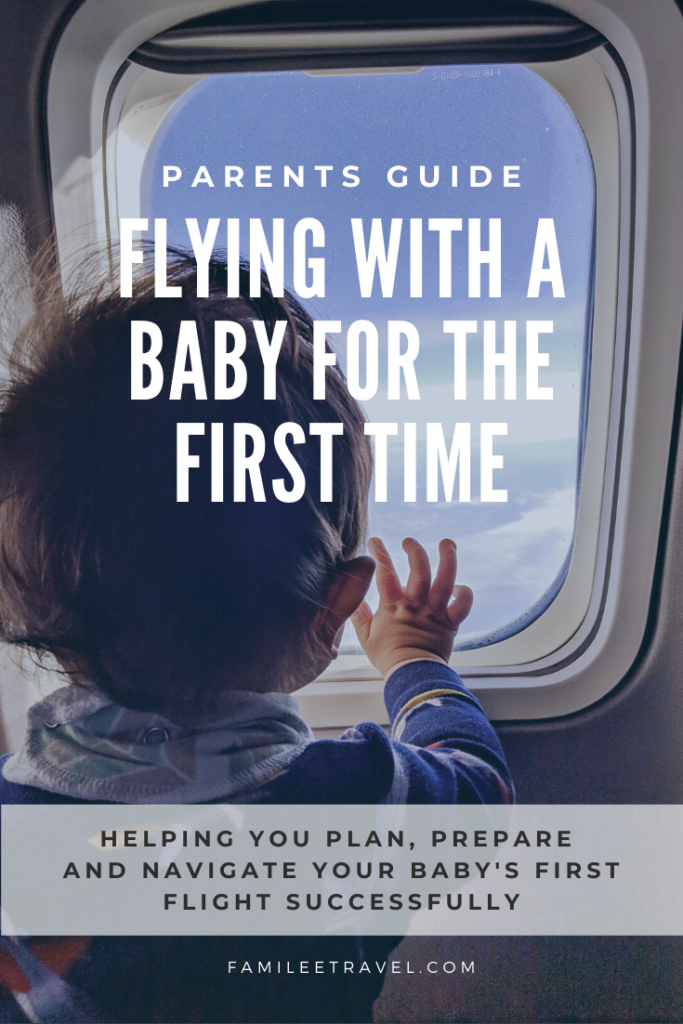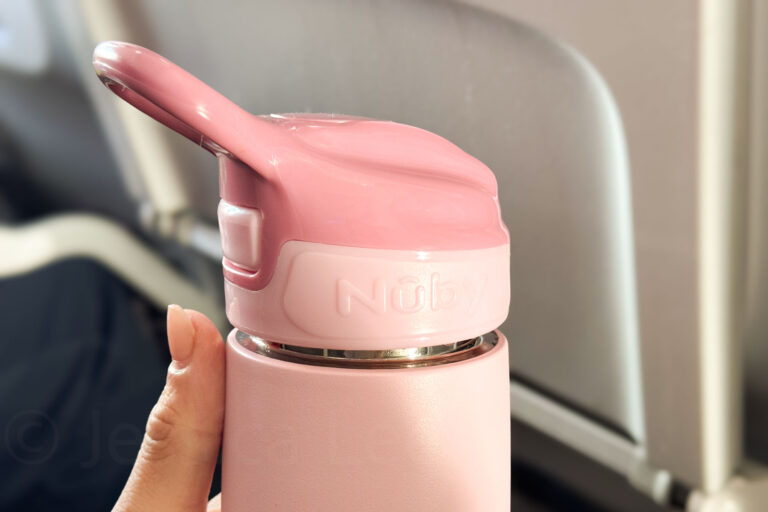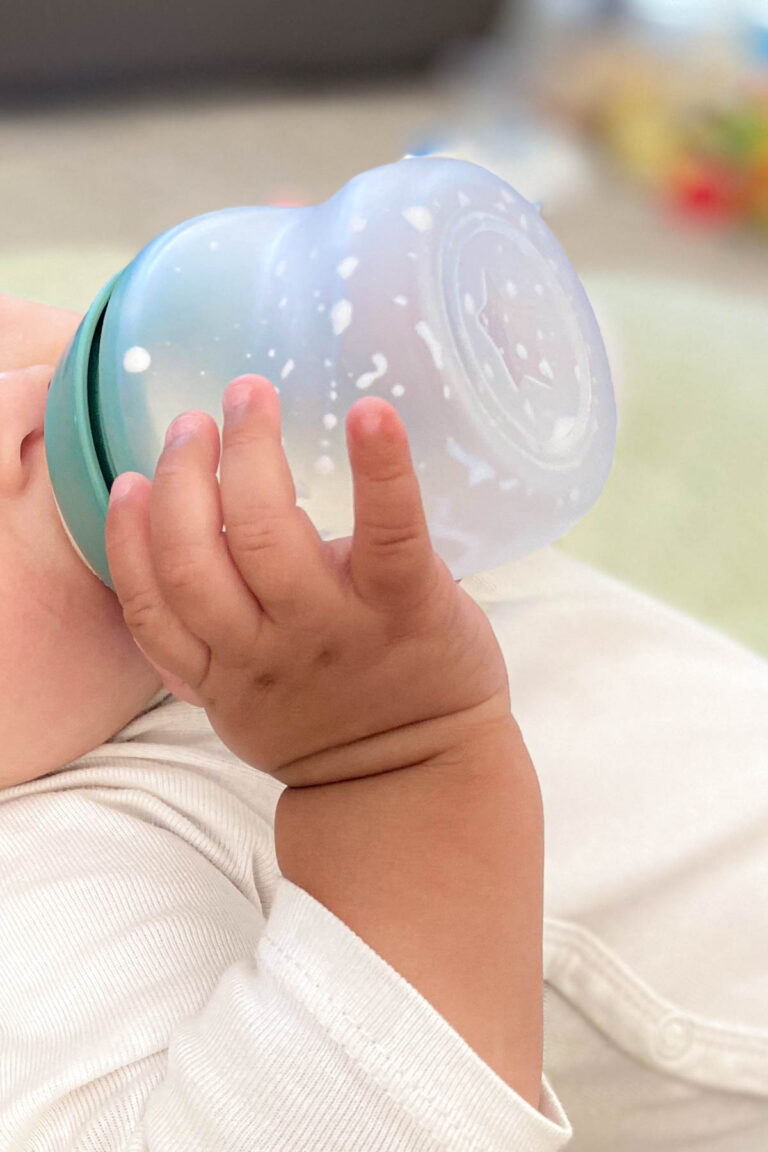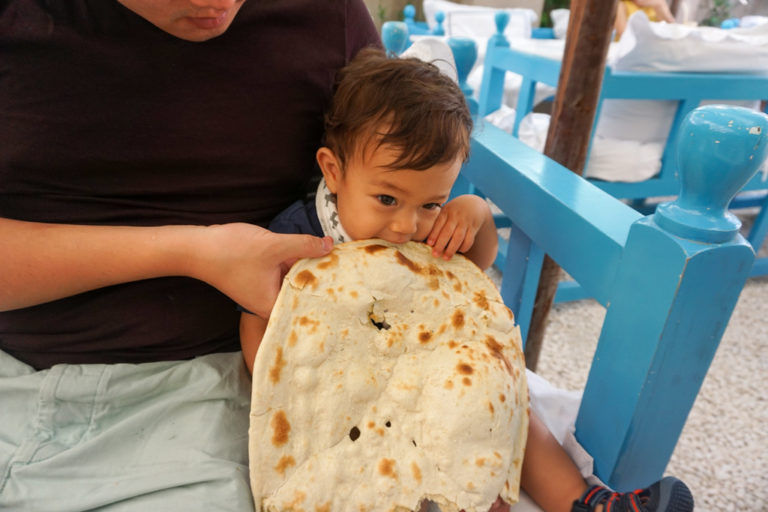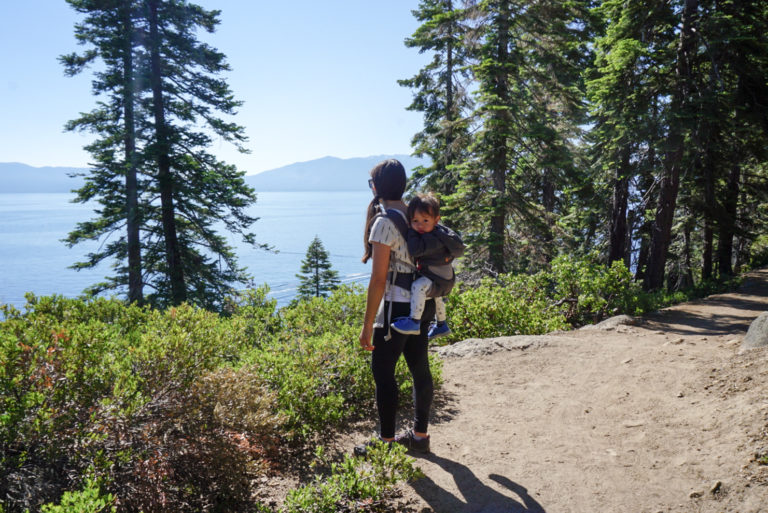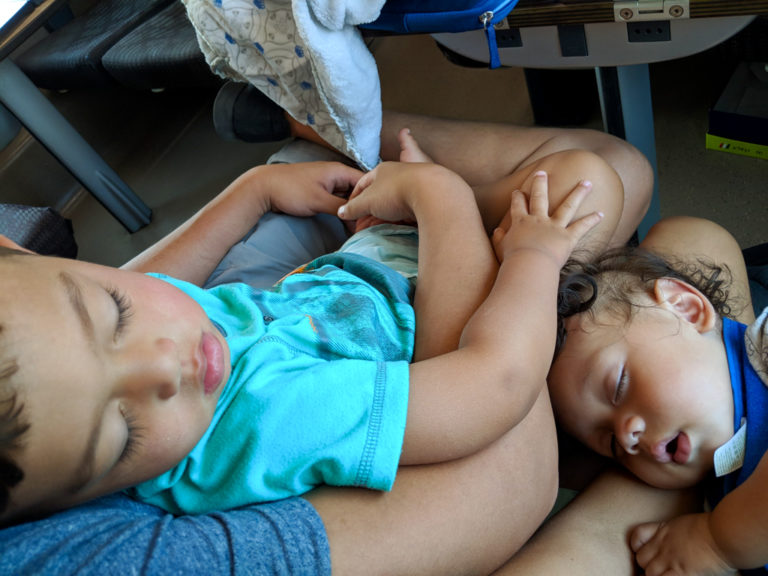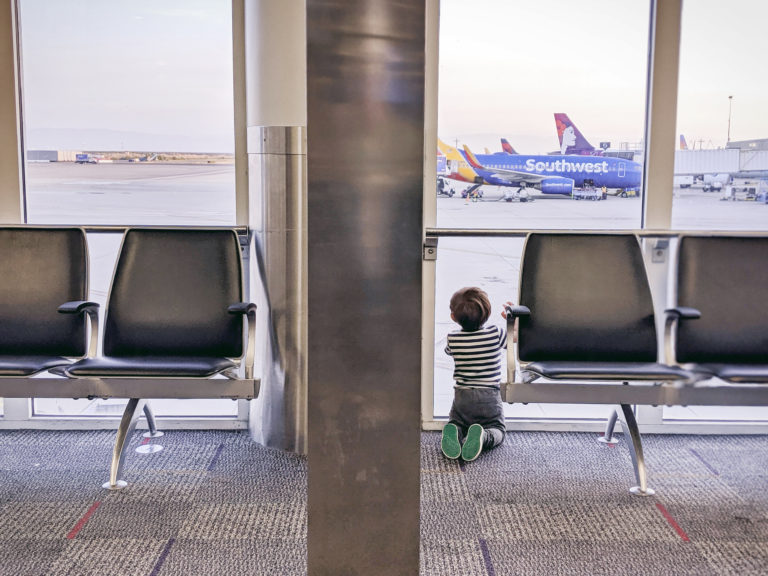Preparing for your baby’s first flight
So you booked a flight (or are planning to) with your baby for the first time and now you’ve made your way here looking for advice? Or maybe it’s baby’s second, third or even tenth flight but you are looking for advice to make things go a little smoother this time around?
Hopefully, I can help. We flew with our first baby about 20 times by the time he turned 1, from 45-minute hoppers to 14-hour long-hauls. A year and another baby later, we haven’t slowed down. We’ve flown up and down, and all around the world with our little ones.
We’ve clocked over 100 flights with a baby or two onboard and I’m still reading flying advice. There will always be someone with different experiences and ideas, and I may learn something new.
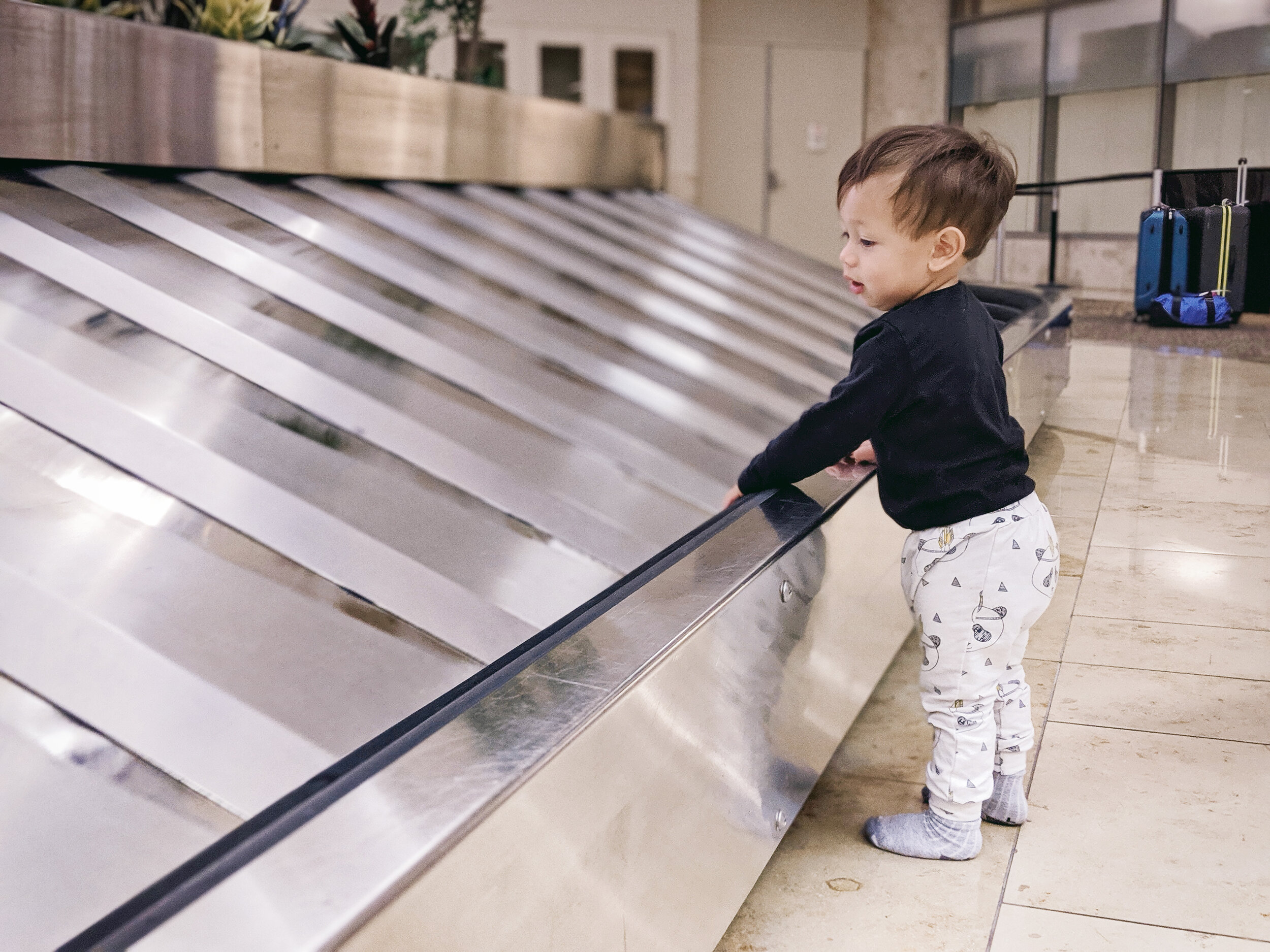
Our early baby travel days were not always smooth, but we loved it from the start and were determined to figure out how to travel more as a family. We have learned a lot through our experiences, and hopefully, I can help you prepare for your baby’s (first) flight.
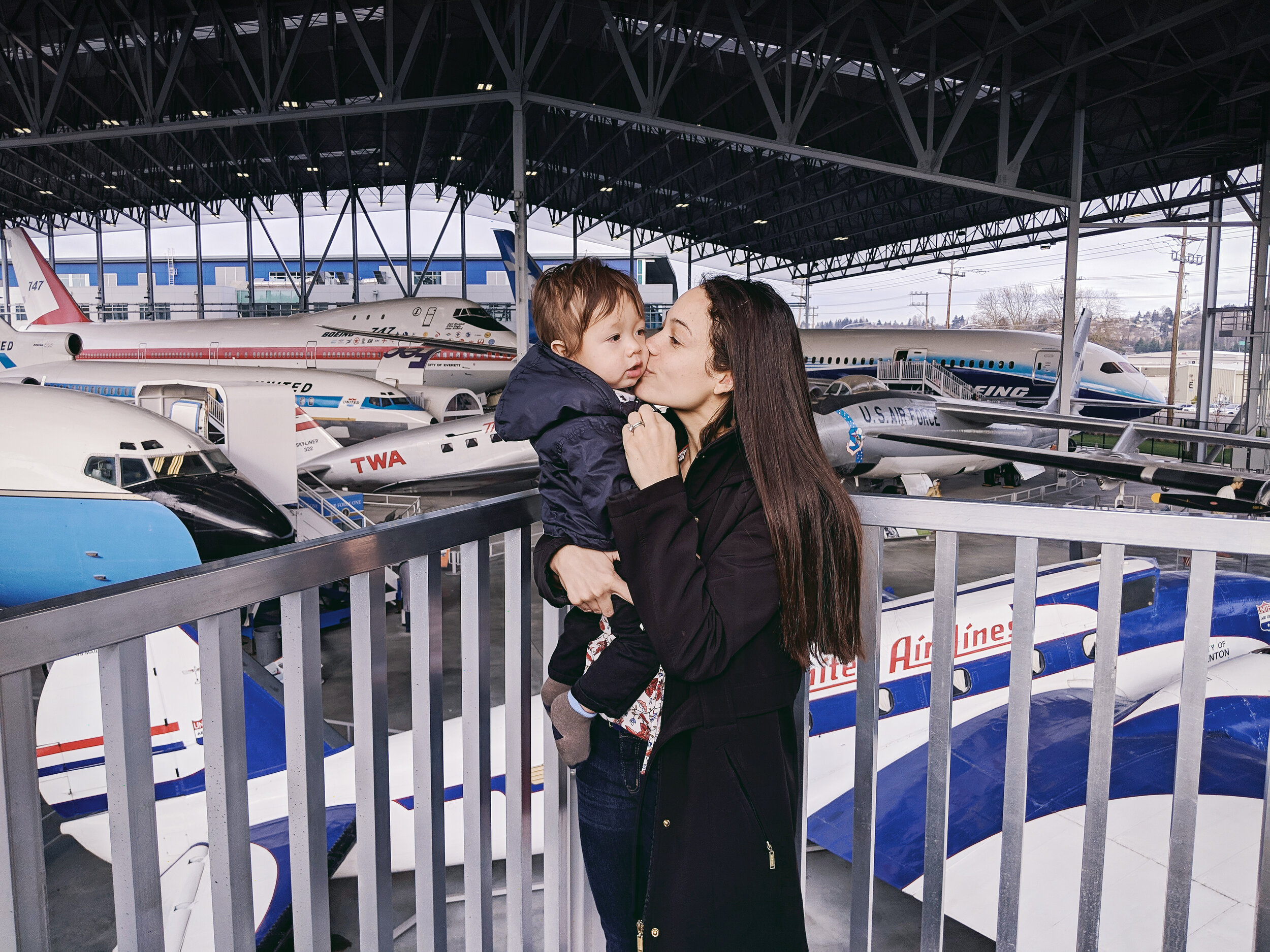
You may not have a choice when you’re flying, but your baby’s age and activity level can make a big difference. Make sure you have the right expectations about their current activity level and plan accordingly for the flight.
This article contains affiliate links. If you chose to purchase something, it will not cost you anything extra by using our link. We receive a very small commission which helps us maintain this site. For further details, you can read our disclaimer policy.
Considering your baby’s age before their first flight
Flying with a 0-4 month old baby
The youngest immobile babies are typically the easiest to fly with. They sleep the most and are more easily distracted and satisfied with minimal things. If your newborn has colic or other early challenges this could make flying so young more difficult. Are you curious, how early is too early to travel with your baby?
Flying with a 4-10 month old baby
More alert, rolling and crawling babies add a little challenge but are still generally easy. Babies grow and change a lot in this range, but there’s a similarity in their rapid development. They’re curious and easily amused with all new things around them. You can use any new environment to distract them. This is a real sweet spot and an ideal time to travel with a baby in my experience.
Flying with a 10-20 month old baby/toddler
Walking babies and young toddlers are the toughest to fly with, in my opinion. They have a really tough time sitting still, rightly so. Moving about is their biggest source of entertainment, and it can be a challenge to restrict that. They also start to have stronger opinions about what they want, but their language skills are still developing and they’re not always able to explain themselves (i.e. hello, tantrums).
Flying with a 20+ month old toddler
As toddlers get a little older usually it gets a bit more manageable again. By this age, they can sit for a little bit if you offer the right activities to distract them. They’ll still need to move, but can be entertained without moving too. Their language skills are more advanced and they should be able to comprehend more advanced directions from you. They may also be able to explain themselves better to get what they want.
- 20+/- months can still be a major challenge, it’s often exhausting for the parents, but there are ways to make it manageable.
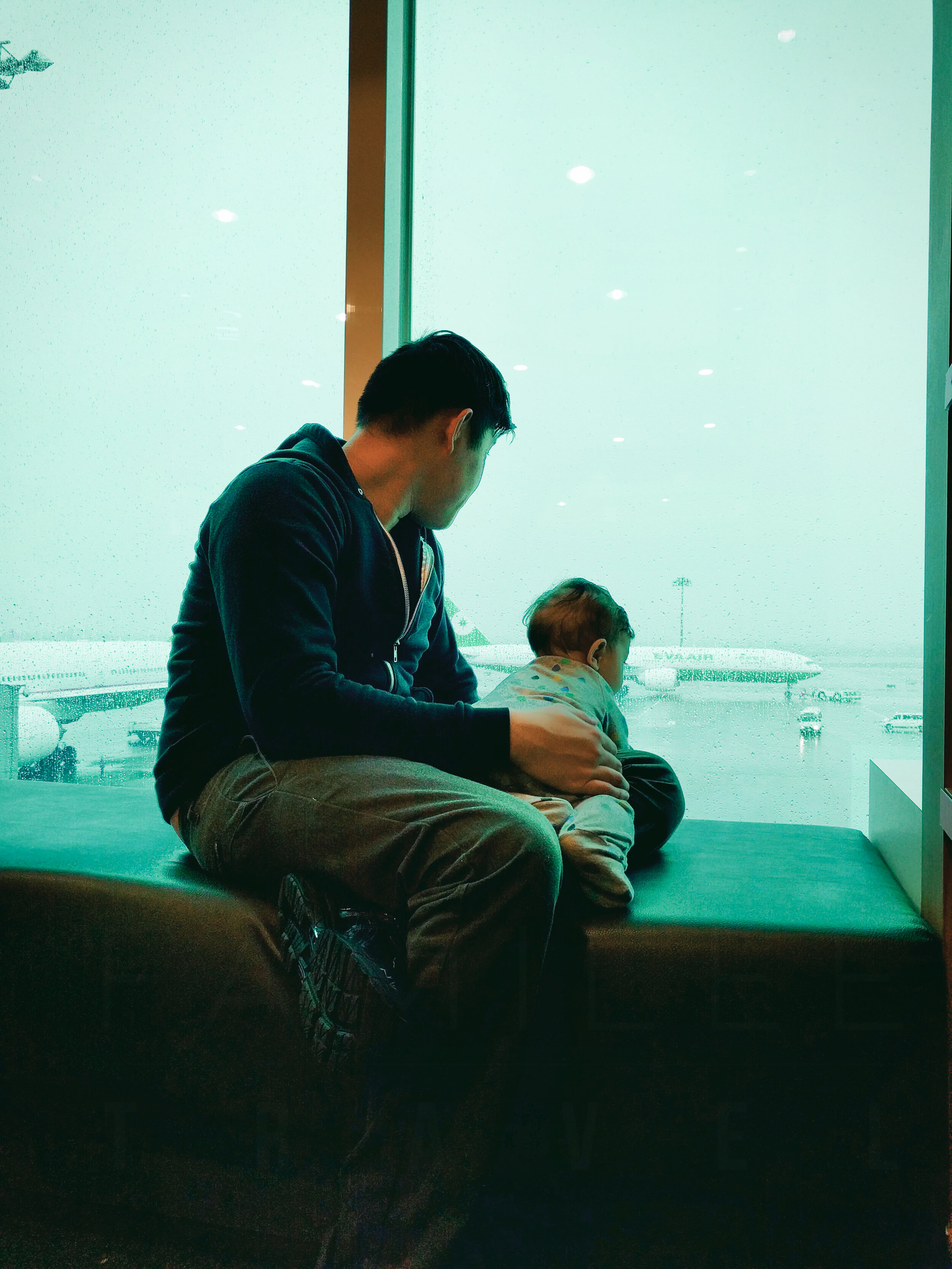
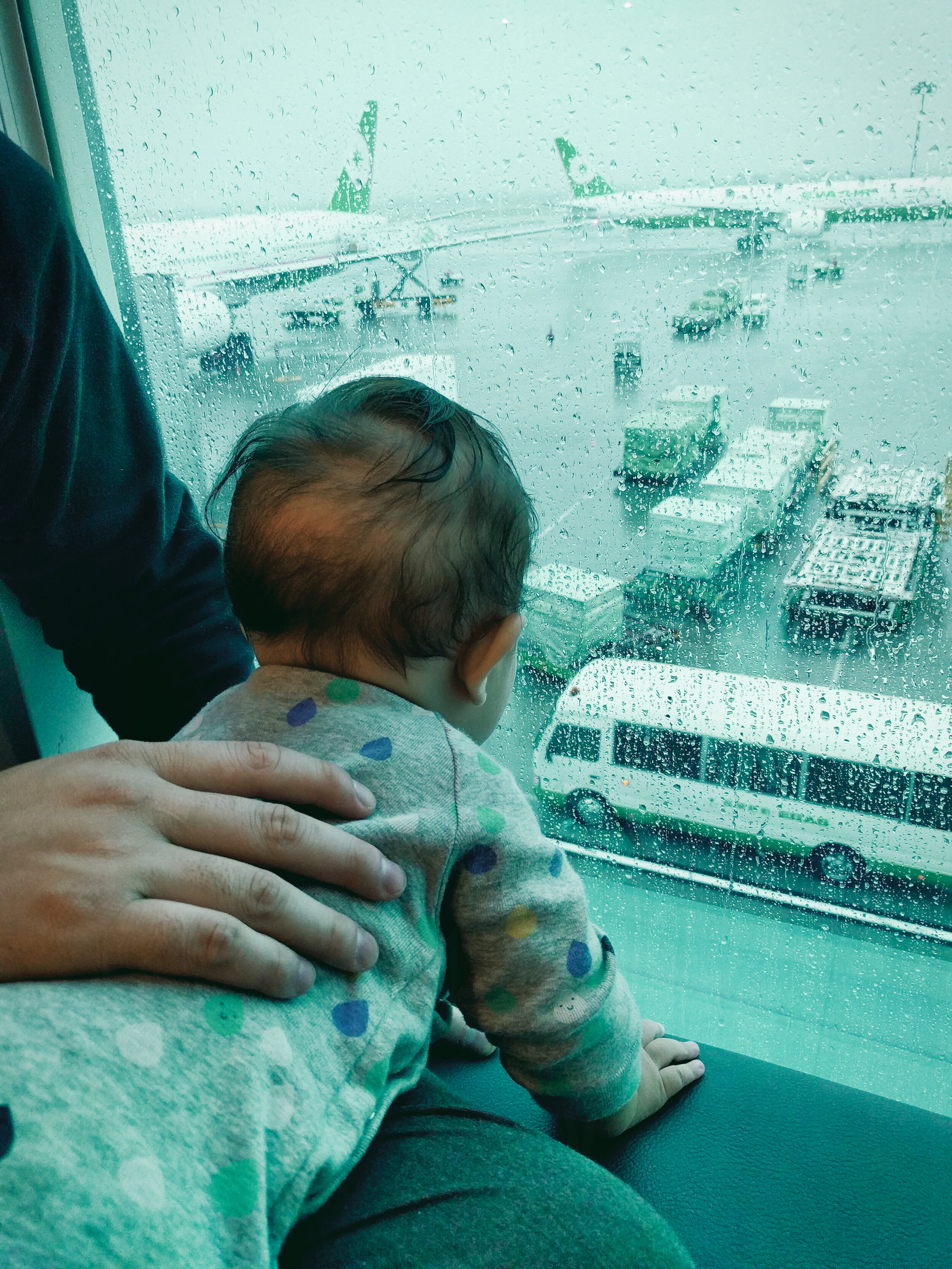
Planning for a flight with a baby
Relax
First things first, relax. Babies can sense your stress, try to relax so your baby stays calm. This starts now. Do your best to not let yourself get anxious leading up to the flight and for the duration of the flight itself.
Call to book your baby’s ticket
If your baby will be a lap infant, then you should call the airline to add them to your reservation. You do not need to call in advance, they can add a lap infant at check-in, but this takes a lot longer. If you’re buying your baby a seat, you should be able to book it online. In a rare case, I was able to add a lap infant online.
Pack minimally
This is one of the toughest things to do. Babies come with so much stuff, but try to think critically about what they need versus what they might need or what’s nice to have. We’ve realized over time traveling is so much easier and more enjoyable when you don’t have to lug so much stuff around with you. Babies can be a lot of work, try to save all your extra hands to manage your baby rather than more bags. Babies don’t need as much as we think they do, and you can buy or borrow things locally at your destination.
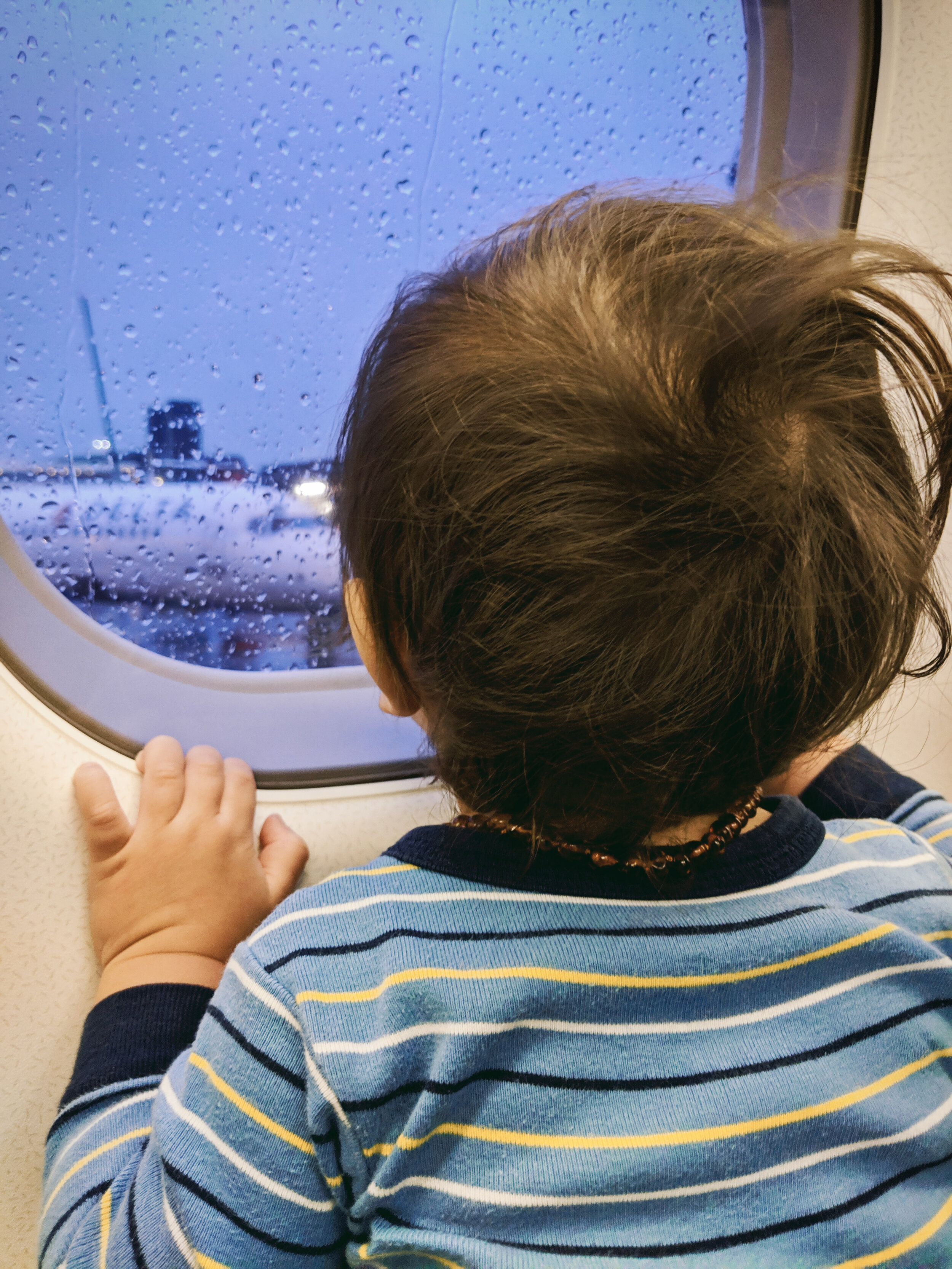
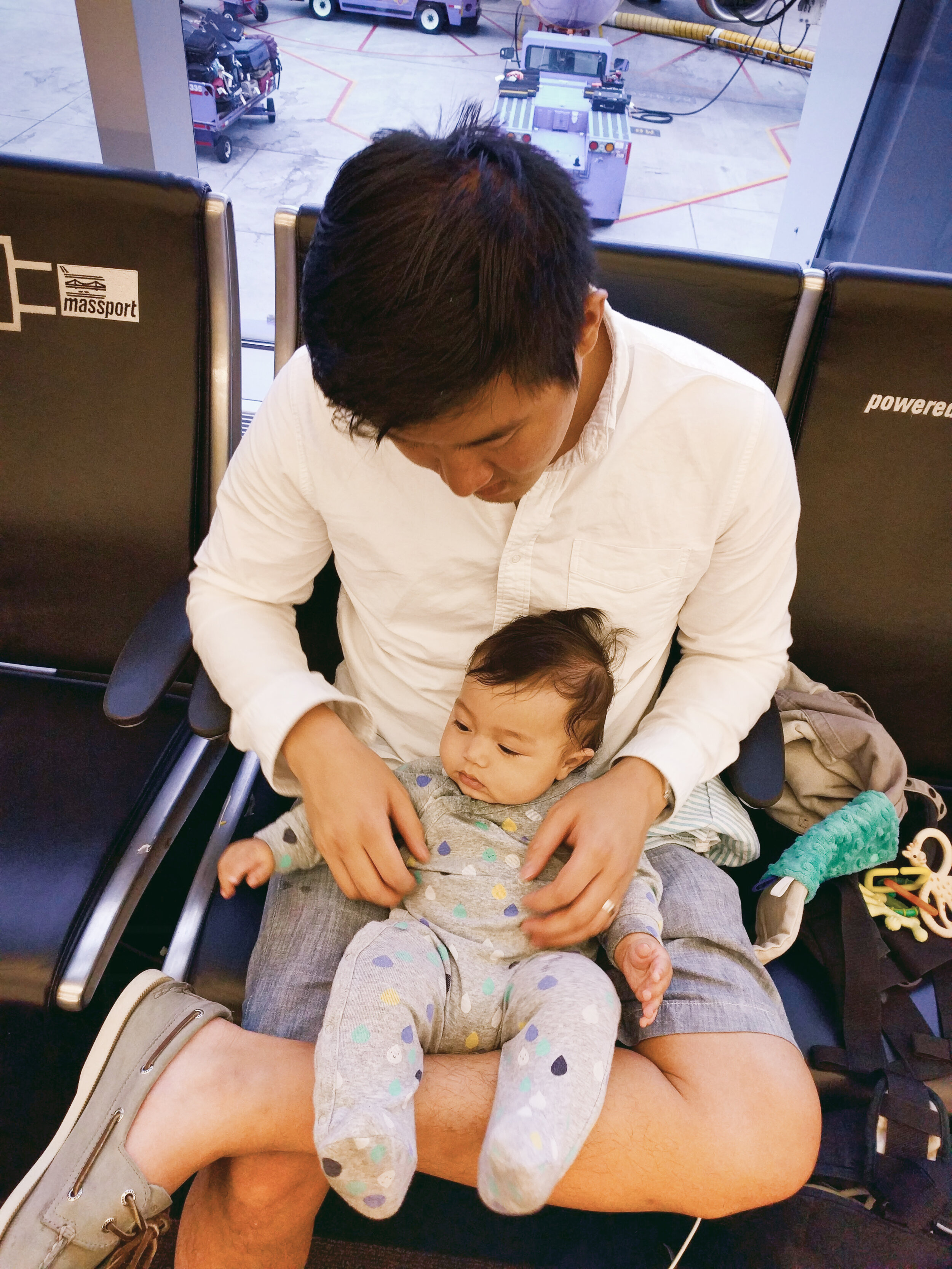
Getting to and through the airport with a baby
Getting to the airport
In our early baby travel days, I would get tripped up with the logistics of getting to/from airports with a baby in tow. A car seat complicates things more than you think. You have to figure out what’s best for your individual situation. Don’t forget getting to/from the airport at your destination too.
- Getting to the airport with a baby in a personal car:
- Pros – most flexible option, can leave whenever you want, comfort in own space, easy to bring baby along in their usual setup, can prep the car with luggage in advance at leisure
- Cons – usually costly to park near the airport, may have to take a shuttle to/from the parking lot/garage, the possibility of traffic
- If a friend or family member could come along and drive your car back home, and pick you up on return, this may be the ideal situation.
- Getting to the airport with a baby via public transportation:
- Pros – most economical option, trains/subways can usually bypass heavy traffic
- Cons – could be tough to manage a baby and all bags, constrained to transit schedules, usually have to walk some distance between station/stop and check-in counters
- Getting to the airport with a baby in a Uber/taxi:
- Pros – drop-off right at airport door, typically available whenever you need it
- Cons – need to install the car seat in a car you’re unfamiliar with, waiting and loading the car in inclement weather, can be pricey depending on distance traveled
- Getting to the airport with a baby via private car/van service:
- Pros – convenient, some offer car seats, drop-off right at airport door, offer extra service/help with bags
- Cons – more costly
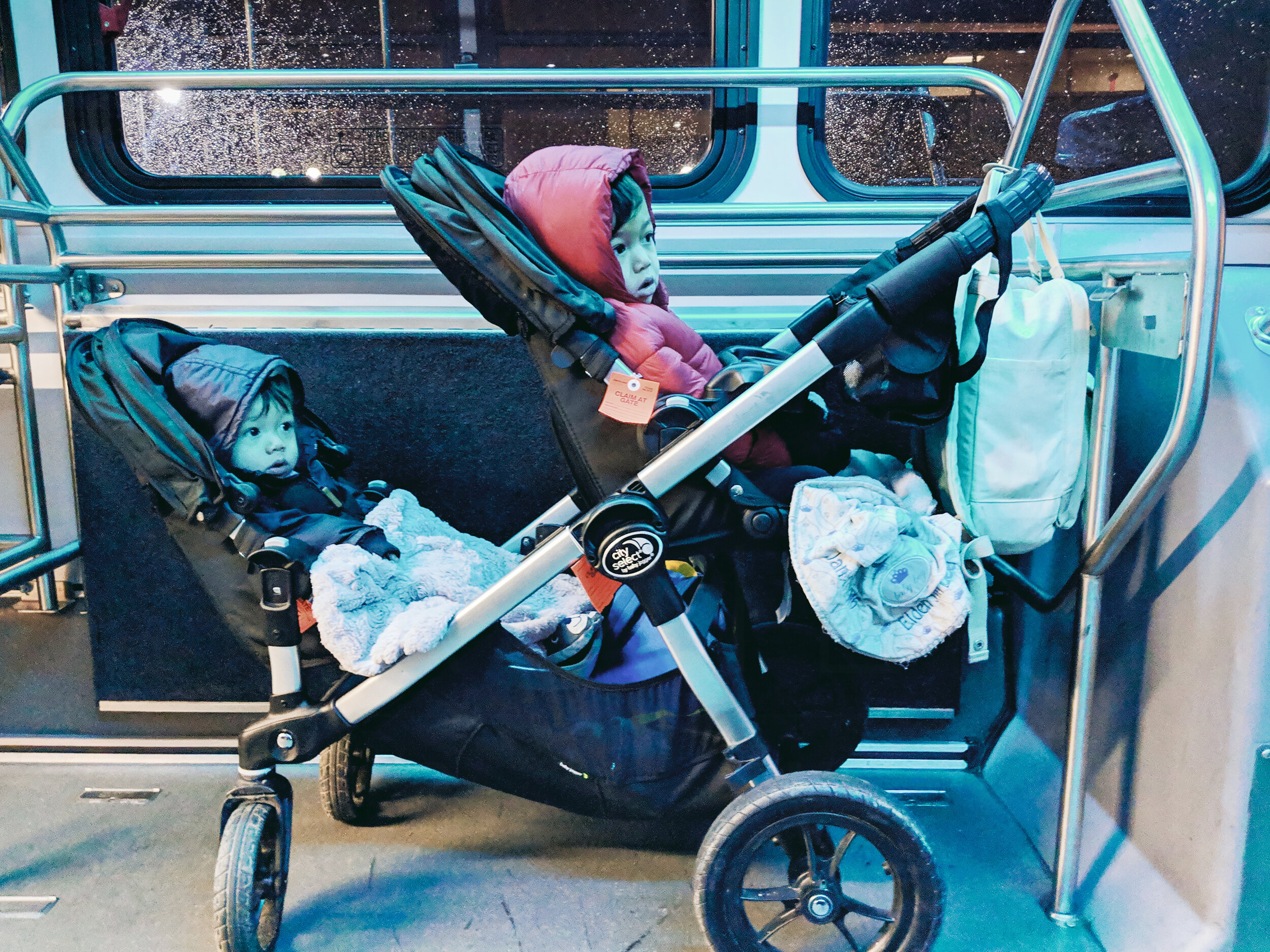
Check-in at the full-service counter
Most airlines will make you check-in at the full service (not self-service kiosk) section of the ticket counter to verify the infant’s age. You should bring a copy of their birth certificate, a photo of it on your phone works. (We were able to check-in at a kiosk one time even with a lap infant, so some airlines may be changing this.)
Check the car seat and stroller
Unless you’re bringing the car seat onboard, check the car seat and stroller at the ticket counter. Most airlines allow you to check a car seat and stroller for free. This car seat travel bag has served us really well. There are others and even some with wheels now. It’s padded and offers more protection than the thinner nylon ones. Since you check a car seat for free, it’s almost like another bag. We usually stuff extra blankets, coats, diapers, etc. since there is space and it protected the seat even more.
- Most infant car seats can be installed without the base, the base makes it easier but isn’t essential. If you need to bring an infant car seat, check if yours can be installed without the base (and practice beforehand), then that is one less thing to carry with you.
You can bring the stroller and car seat through security, but it’s easier (and I’d recommend anything easy for the first flight) to use a baby carrier. You should be able to wear your baby in a carrier right through security. It’s a lot easier and faster, and keeping baby so close to you will usually help keep them calm.
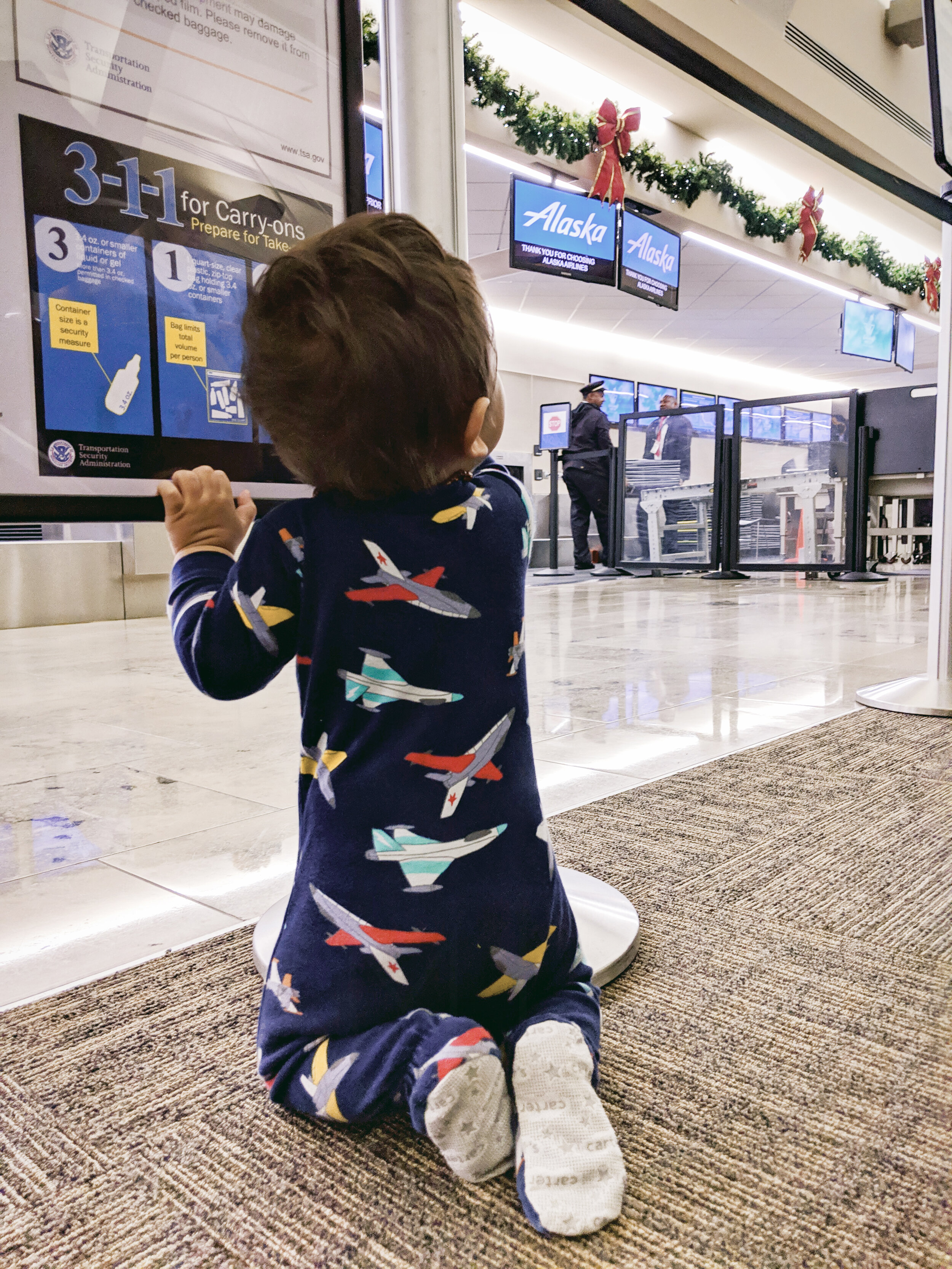
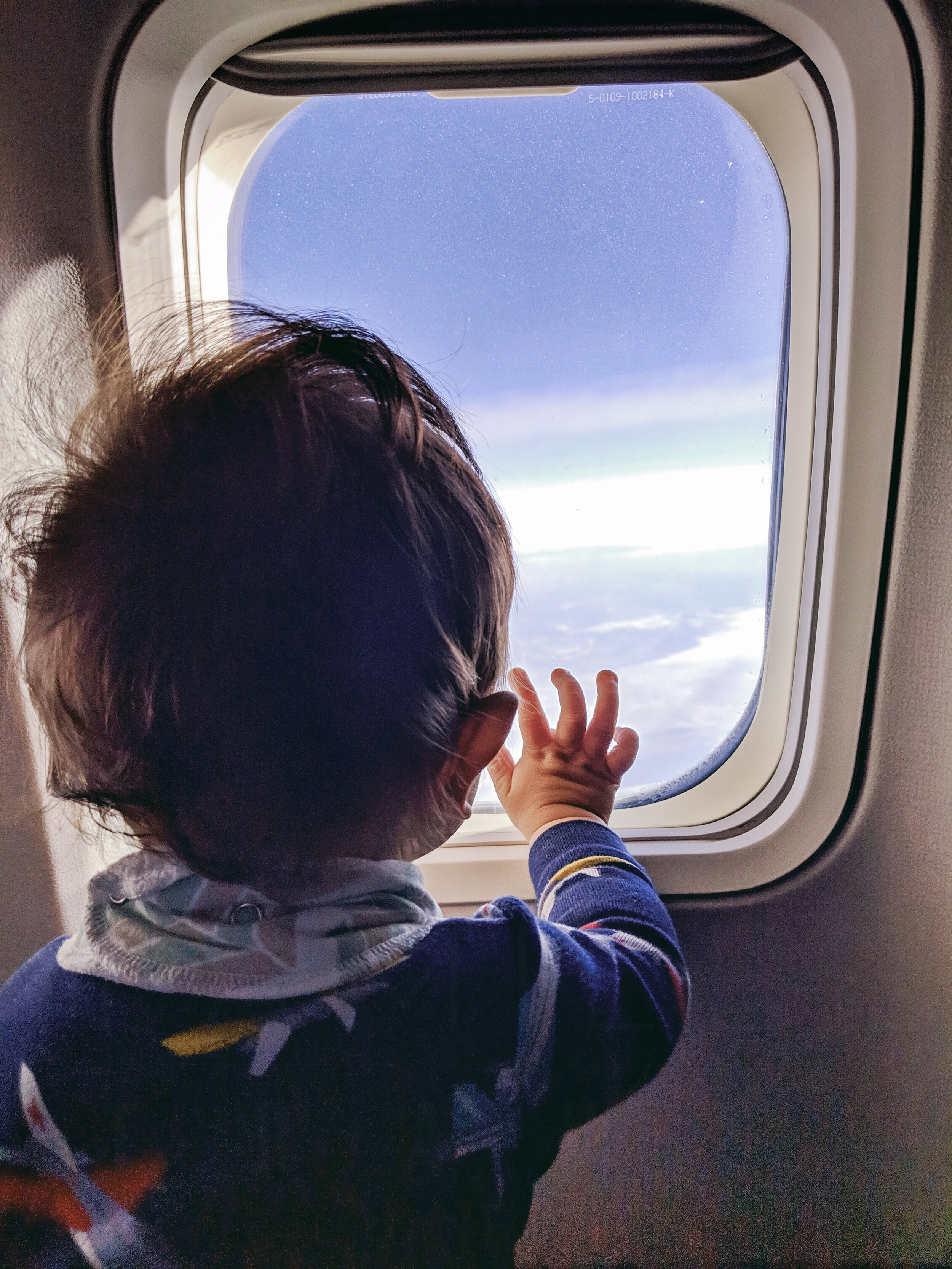
Flying with a baby
Feed during takeoff and landing
Breastfeed baby, or offer a bottle or pacifier during takeoff and landing. This will keep them swallowing which will relieve the pressure in their ears and help them acclimate to the altitude change. After so many flights, our boys seem unfazed by the pressure change, but now I’ll offer them water if I feel my ears popping a lot.
I typically used a nursing cover on the plane, less for privacy and more as a distraction barrier for my FOMO babies. This is often how I got them to fall asleep, blocking out all the excess stimuli on the plane.
Changing baby on a plane
Most airplane bathrooms are outfitted with a changing table. I only bring a portable changing pad, wipes, and a diaper with me in there since it’s already so cramped, no need to fit a whole bag in there too. Some flight attendants want you to put the diaper in a separate bag, rather than leave it in the bathroom trash.
Bring snacks and drinks
The airplane snacks probably won’t be baby-friendly. Bring your own – snacks can be a great distraction for babies of a certain age.
Bring entertainment
Bring toys, books and anything that will amuse baby for a period. Try to bring things that aren’t too small (it will get dropped again and again), and also not too big (taking up too much space). Check out our favorite toys and some more tips for entertaining babies and toddlers on a plane here.
Use your environment
Babies are naturally curious, use this to your advantage. Depending on their age, your baby may find different things on the plane interesting enough to hold their attention – the people, armrests, tray table, window, plane literature, etc. As long as the seatbelt sign is off, don’t feel restricted to your seat. It’s okay to get up and walk around with your baby.
Make the most of your layover
Don’t fret if you need to fly with your baby on a connecting flight – use that layover to your advantage. If your baby is having a tough time on the flight, use the connection as a change of scenery to calm them down. If your baby has extra energy, use the layover to let them spread out and play. Sometimes our babies would resist sleep on one flight, so we used the layover to wear them out and they would fall asleep easily on the second flight.
Accept help
As parents, we tend to get nervous about our baby acting like a baby on a plane, and bothering other people. However, some people understand and are genuinely happy to see them on board. These people occasionally offer to help, whether that’s grabbing your bag, playing across the aisle, or holding them. Take someone up on this offer, even a few minutes of relief can make a difference.
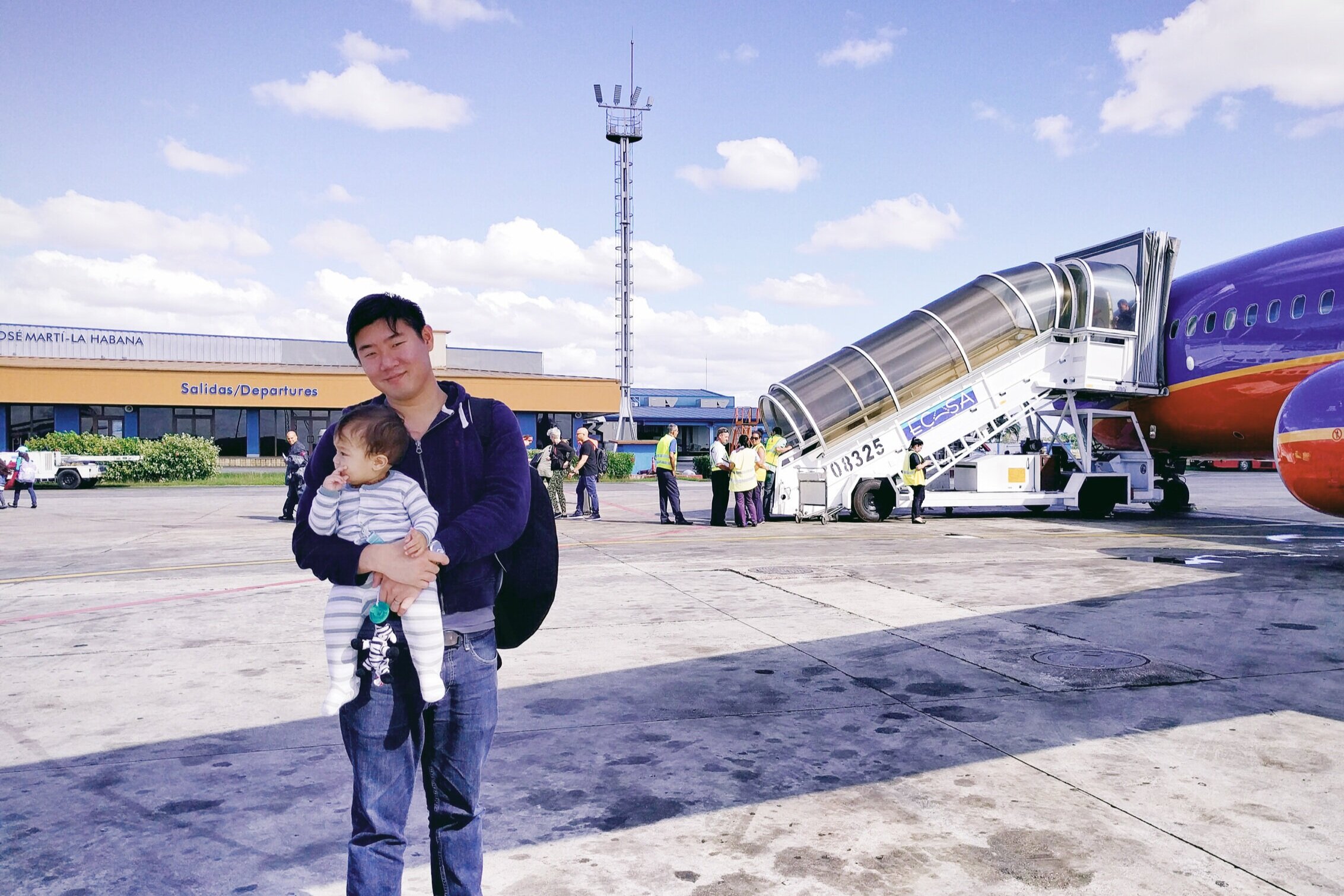
Unfortunately, there is no magic fairy dust or perfect equation to result in a perfect first flight with a baby. Going in with realistic expectations and preparing yourself accordingly can make a big difference in how smoothly your baby’s first flight goes. With more practice, you get better and better. It can seem daunting, but flying with a baby is doable and you will manage. You may even realize it can be pretty great and a baby doesn’t need to hold you back from traveling.
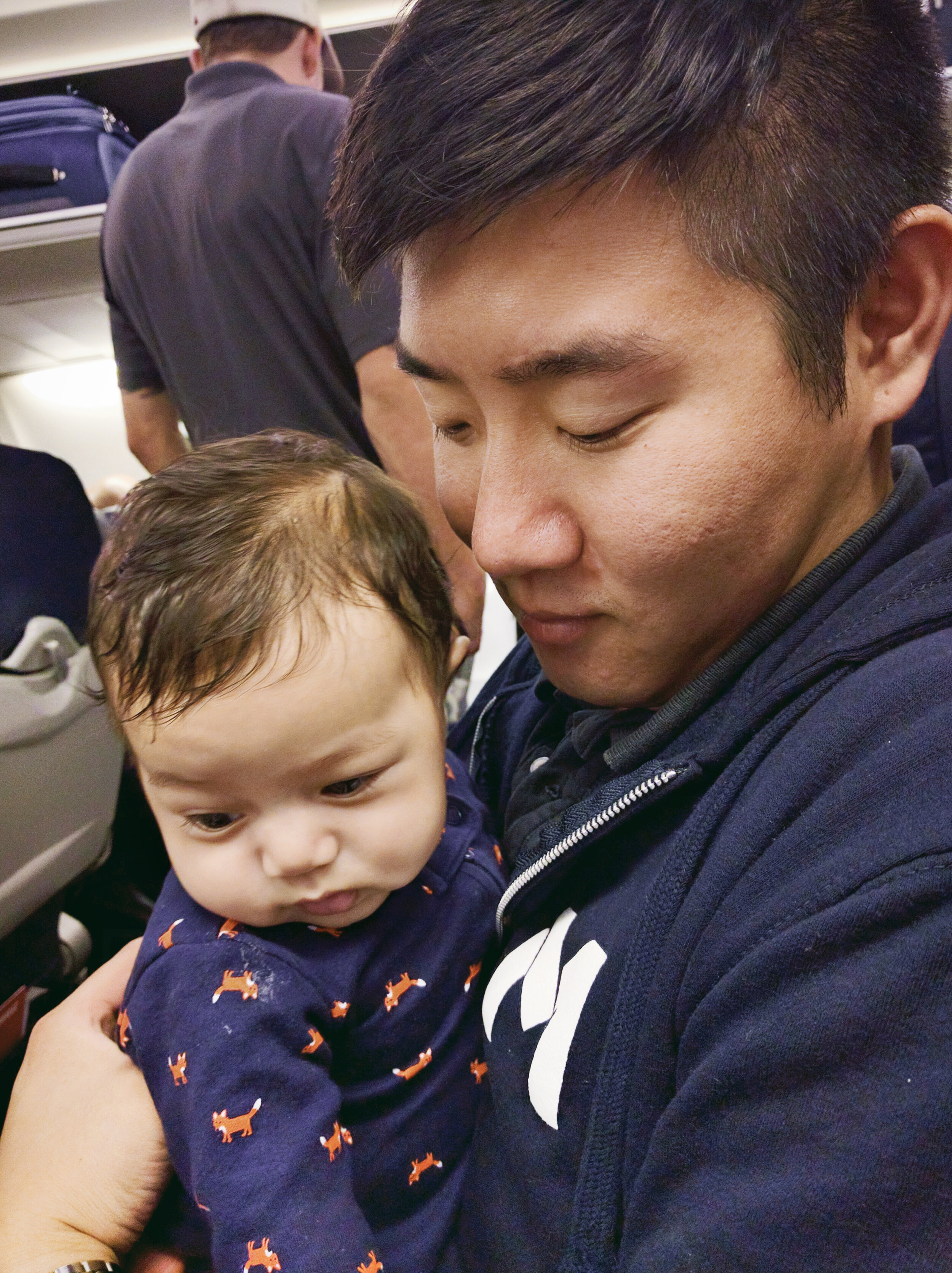

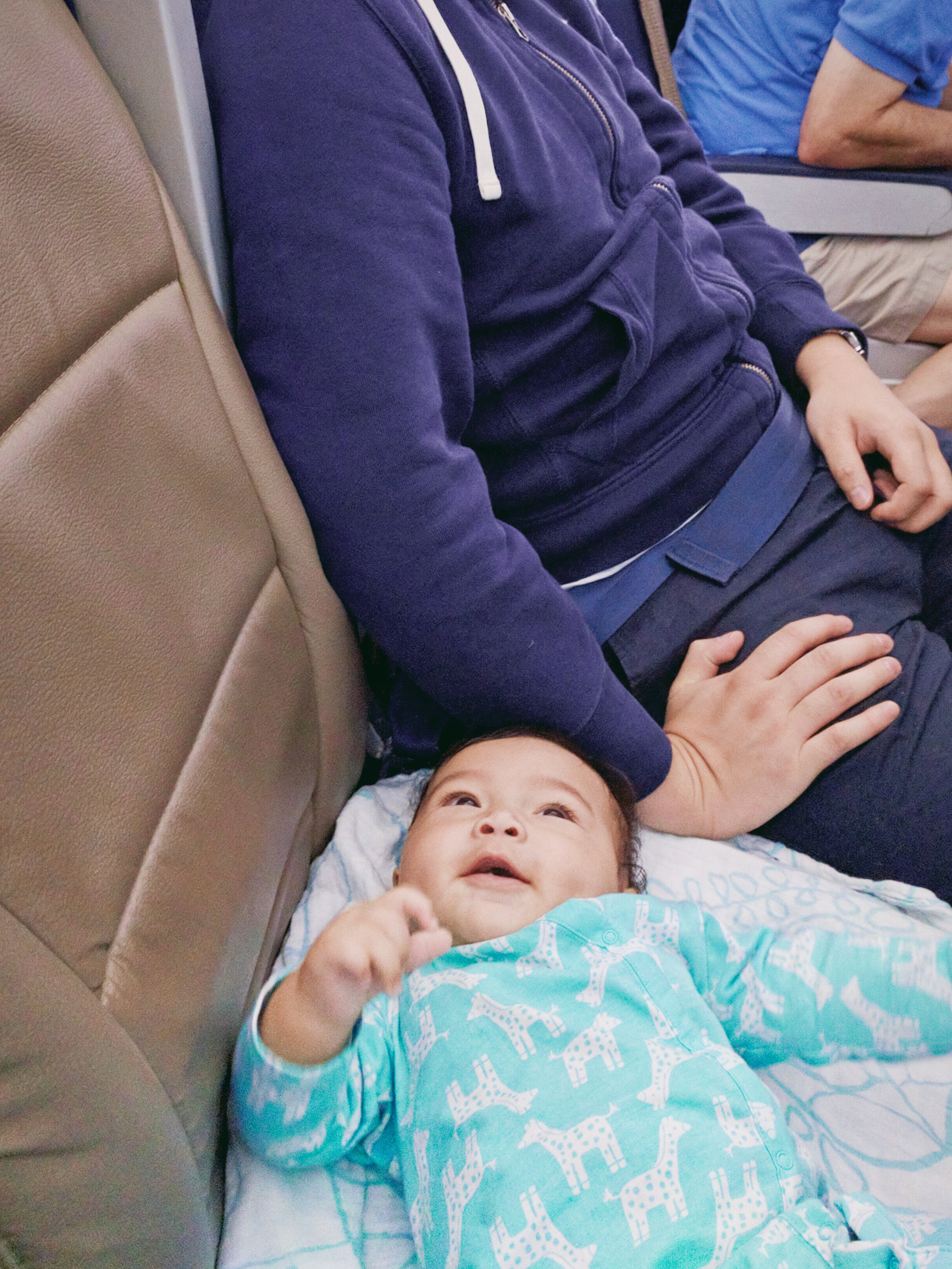
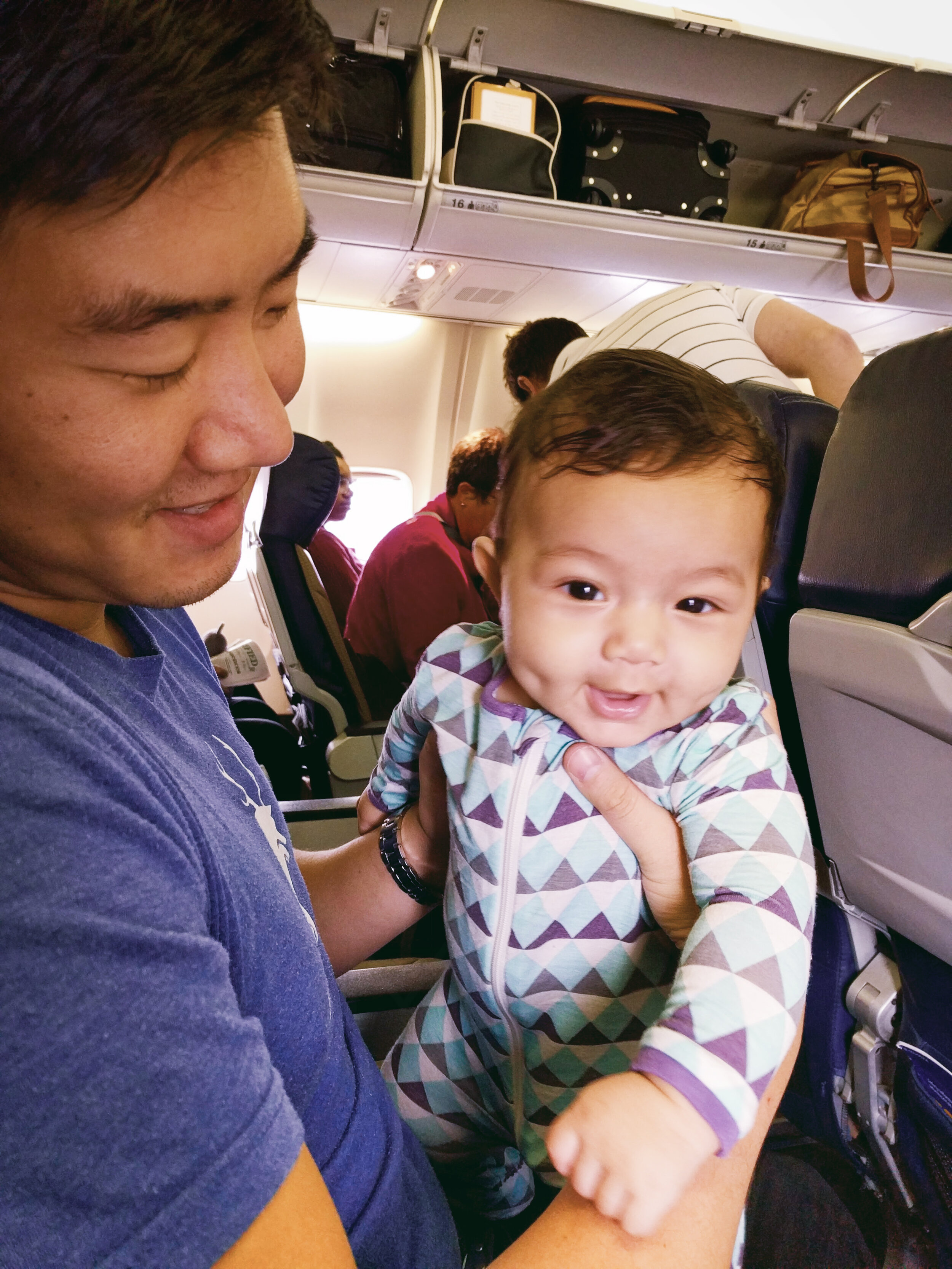
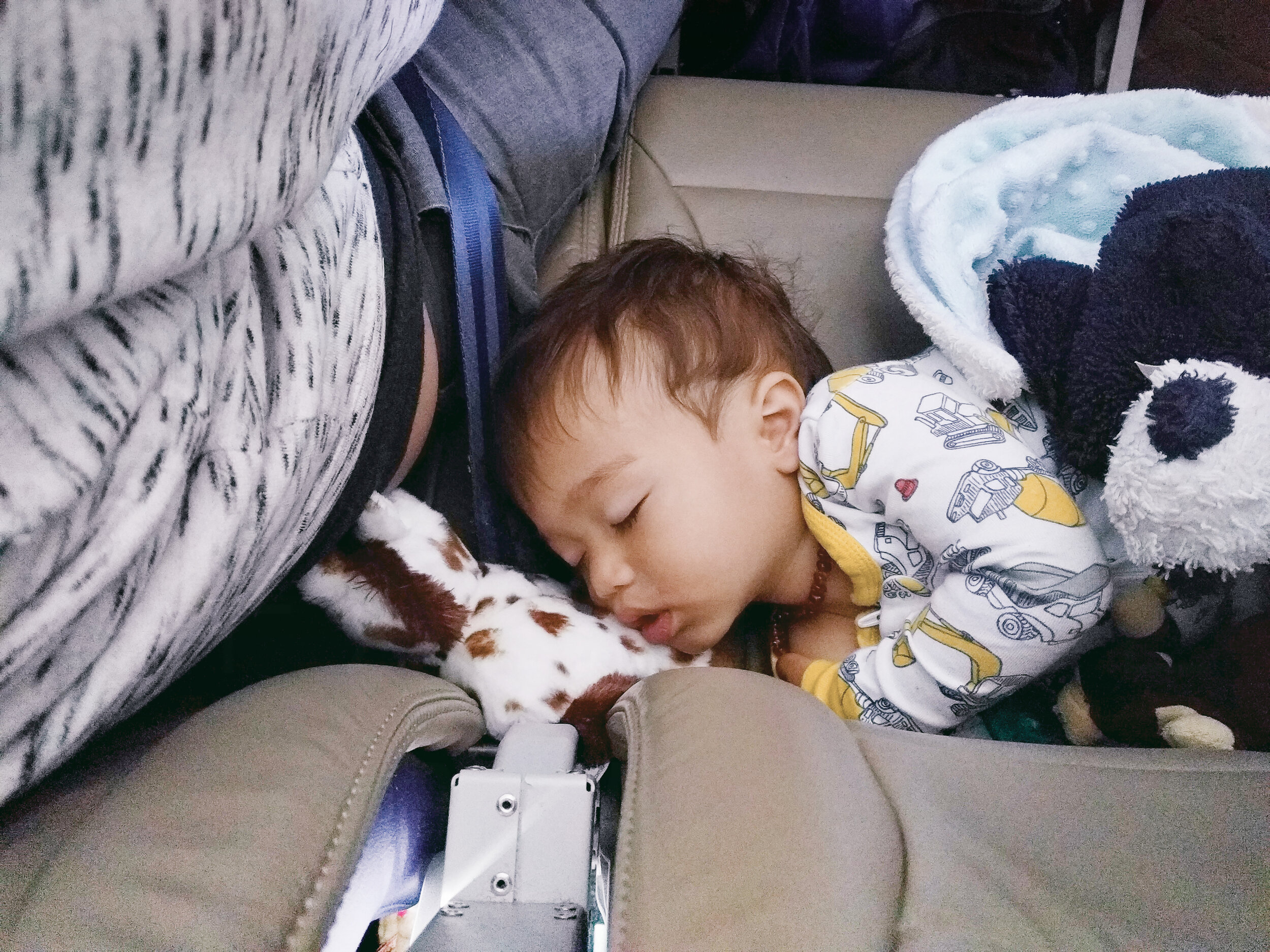
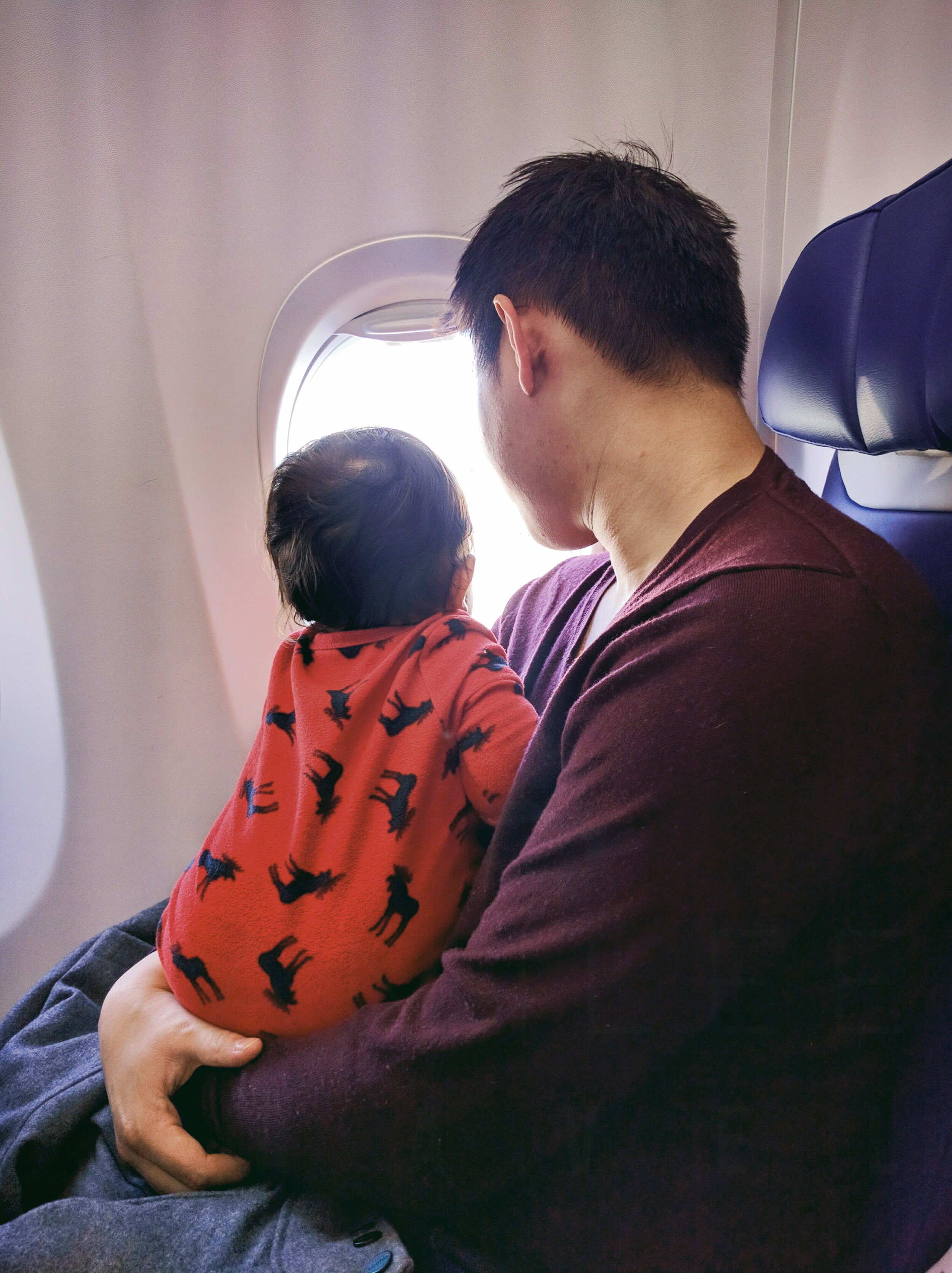
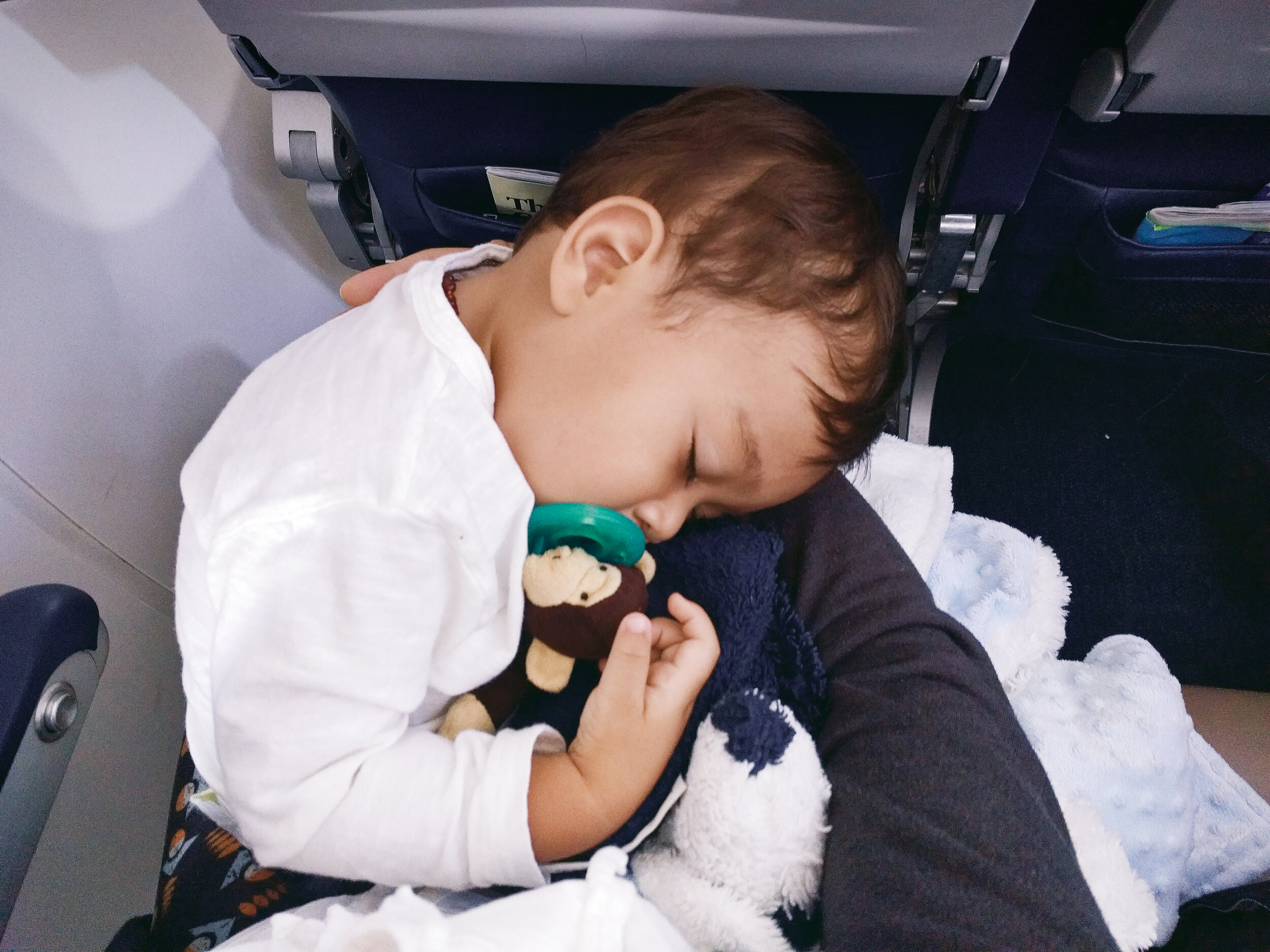
Related Reading
- Best tips and favorite toys for entertaining babies and toddlers on a plane
- How early is too early to travel with your baby?
- Tips for surviving a long-haul flight with a baby or toddler
- Bring the bottle through security for baby
Pin it for later
Don’t forget to pin this for future reference, and share it with any friends!
